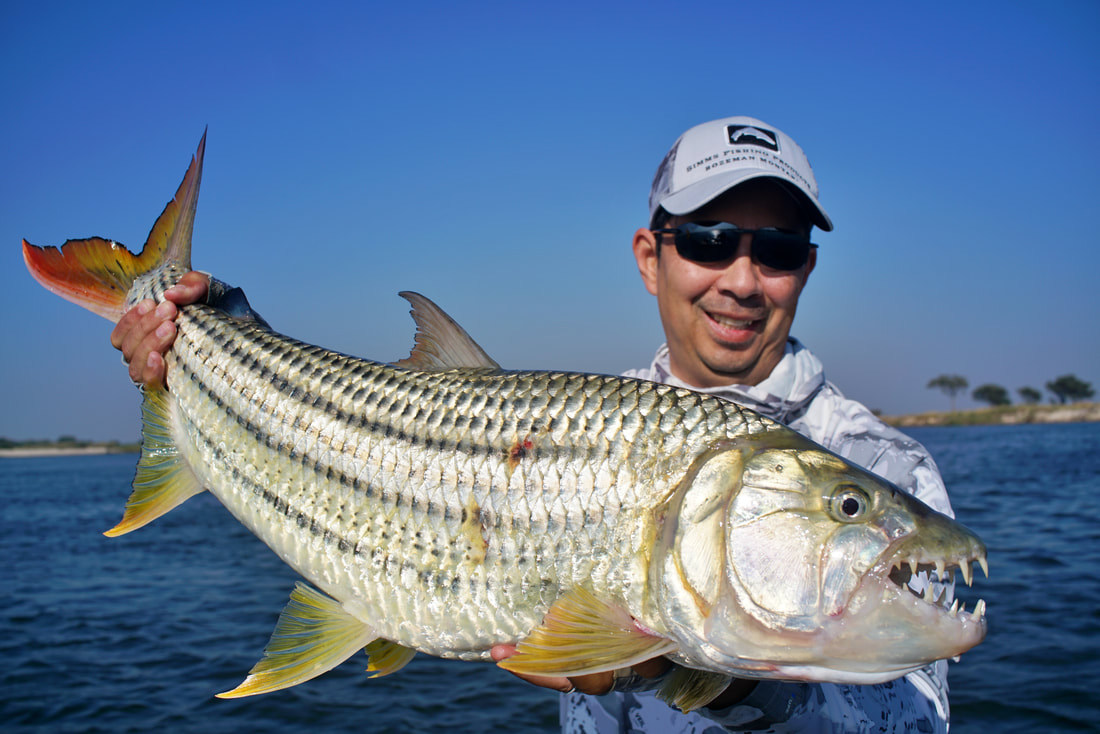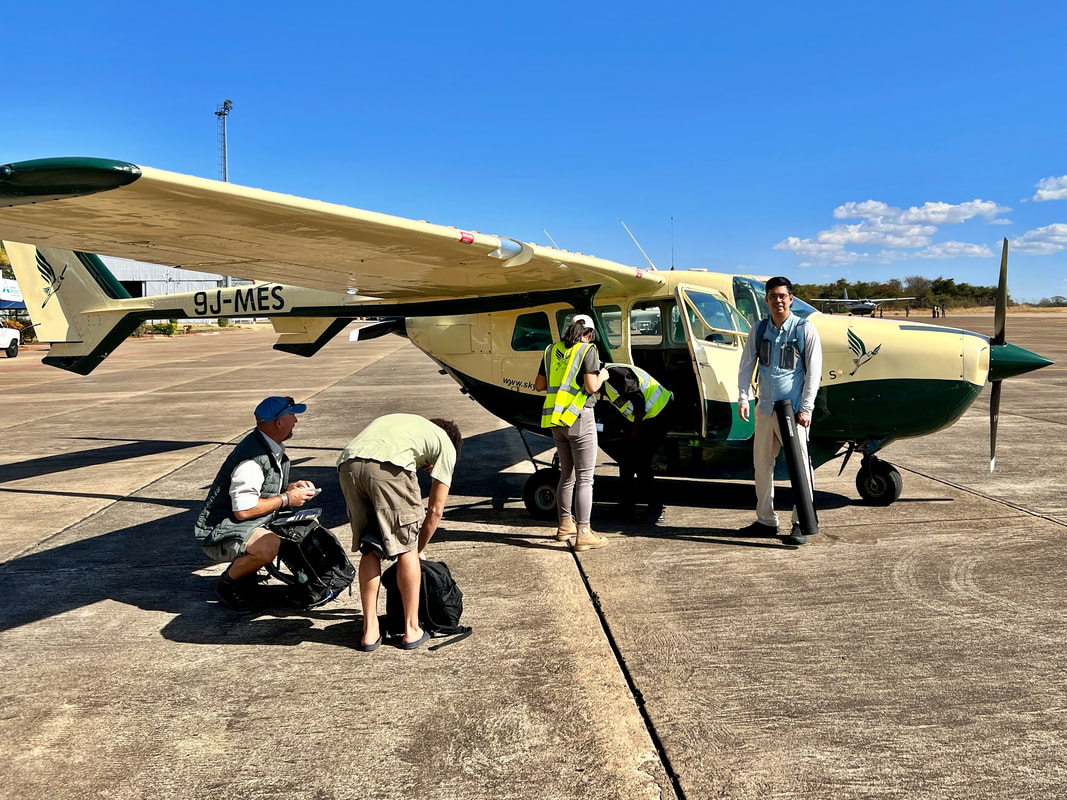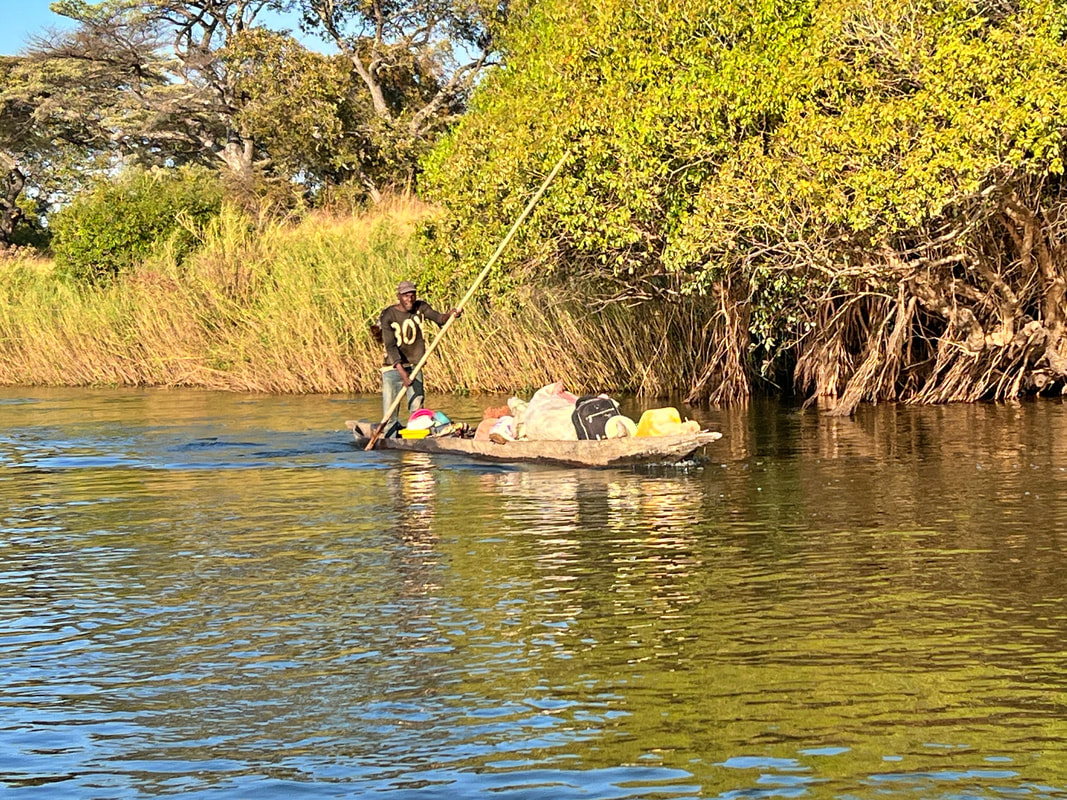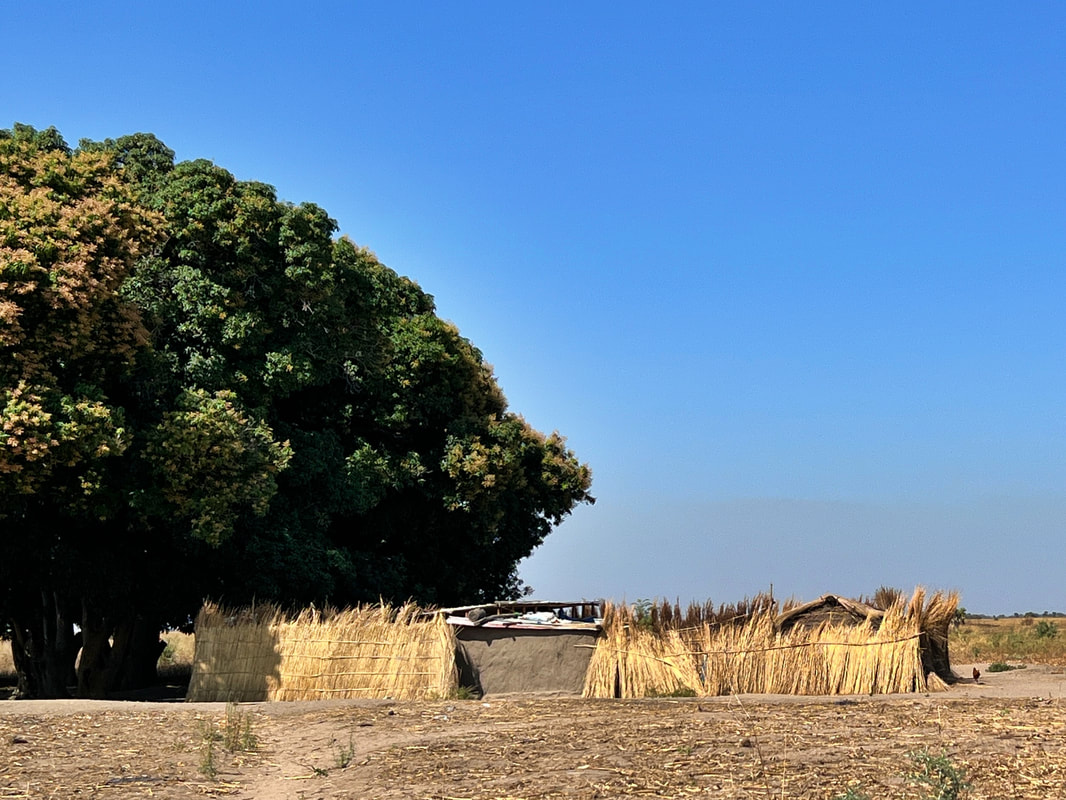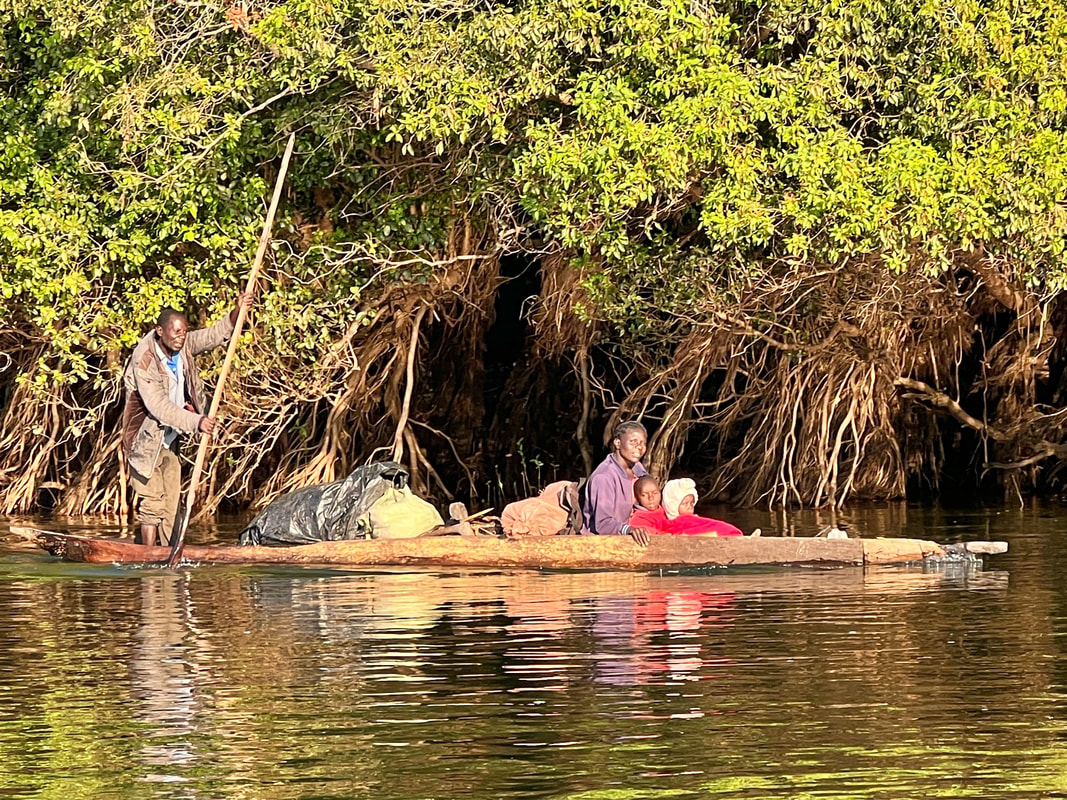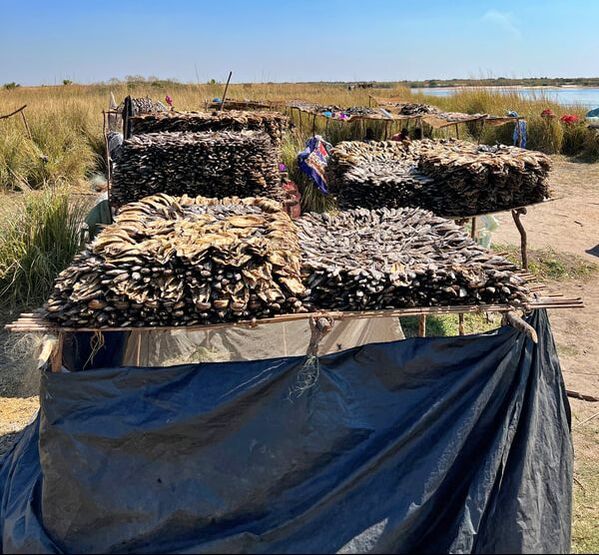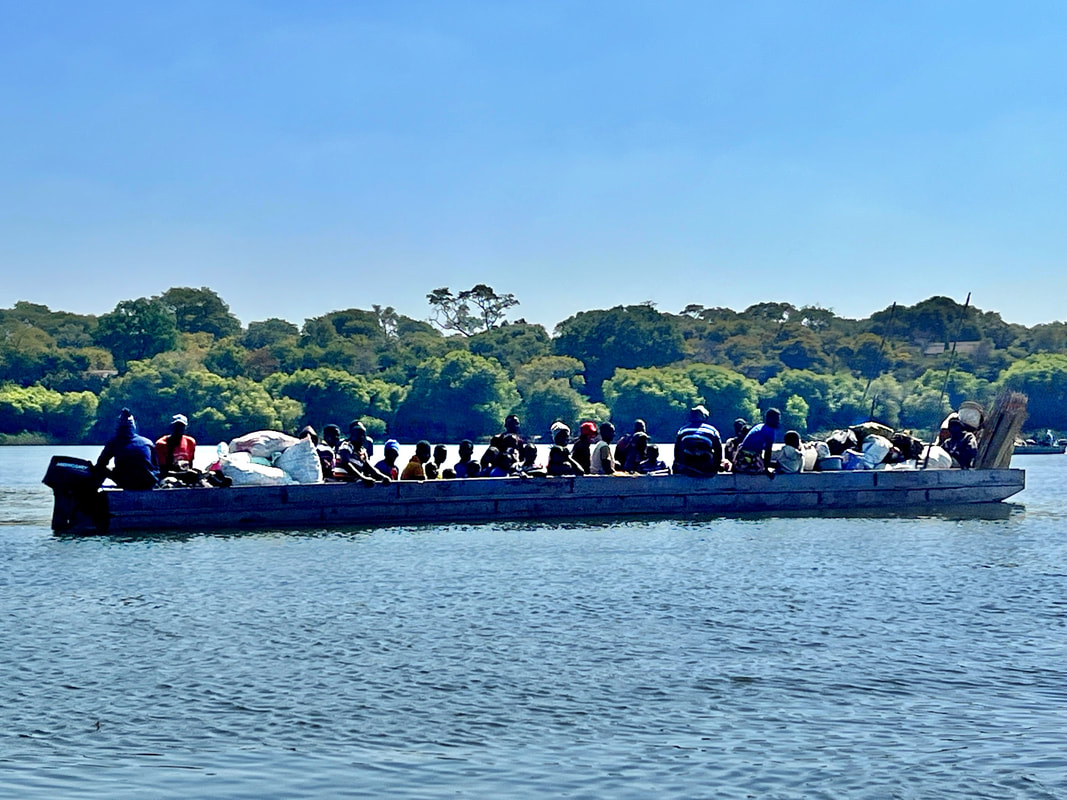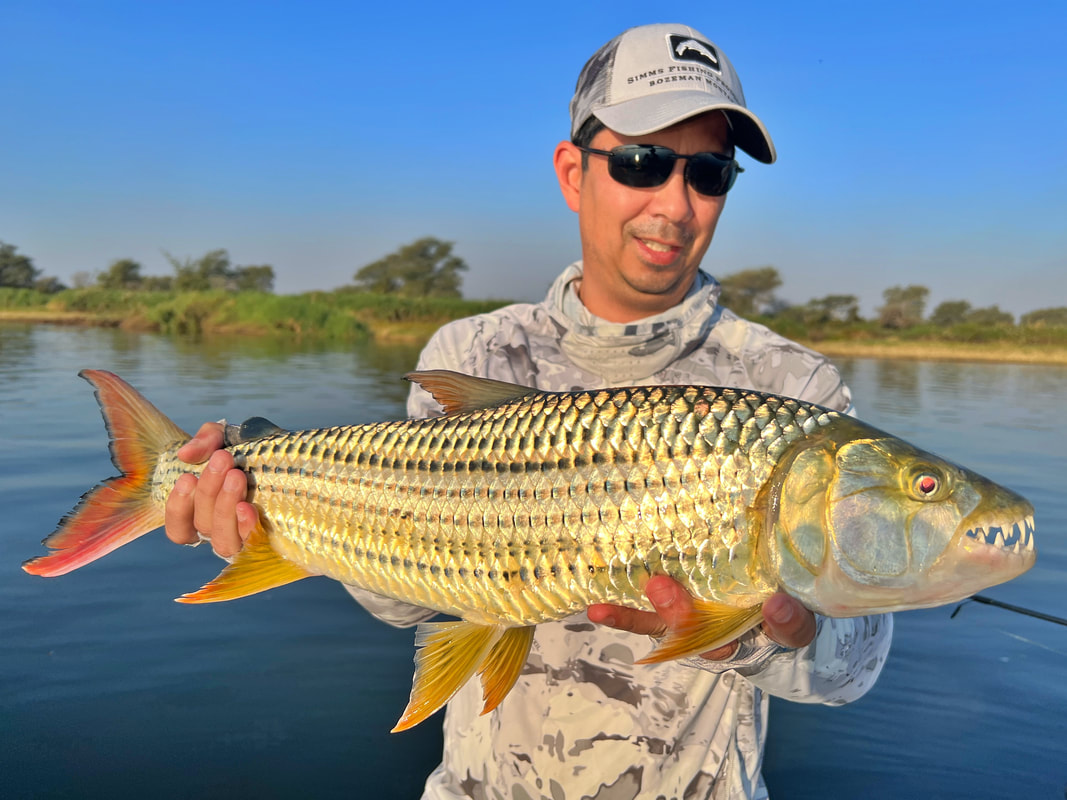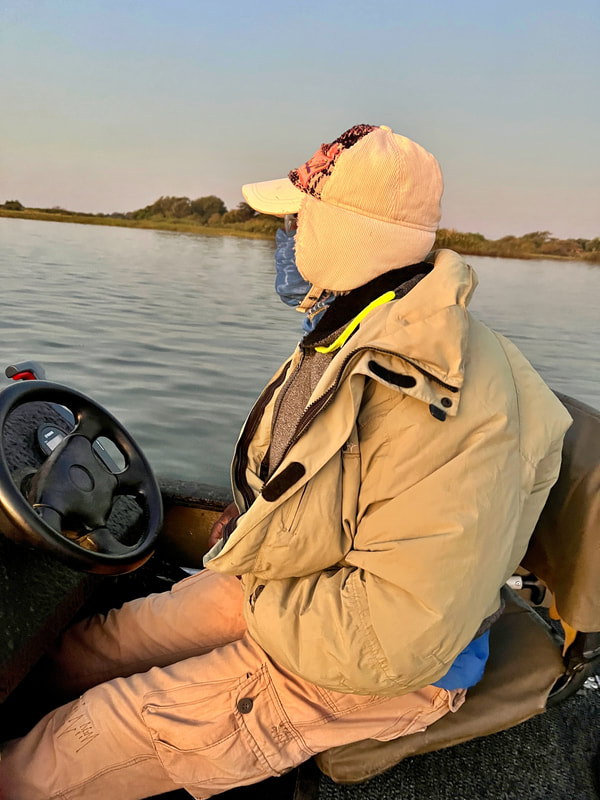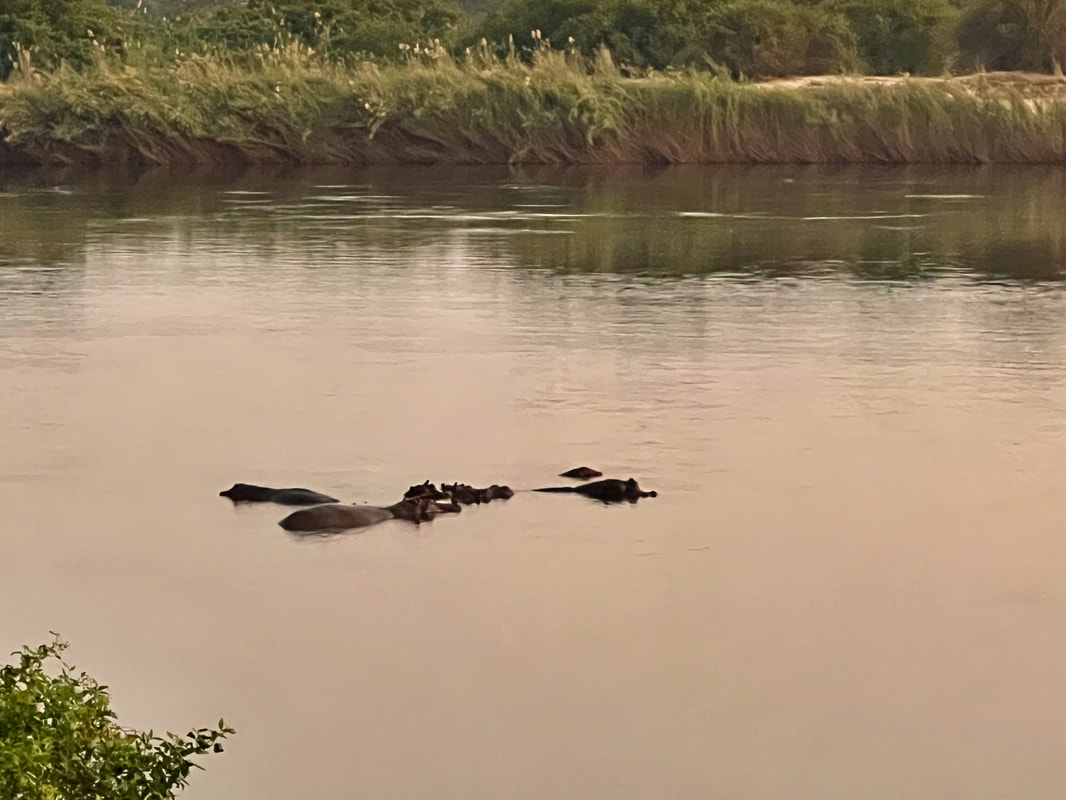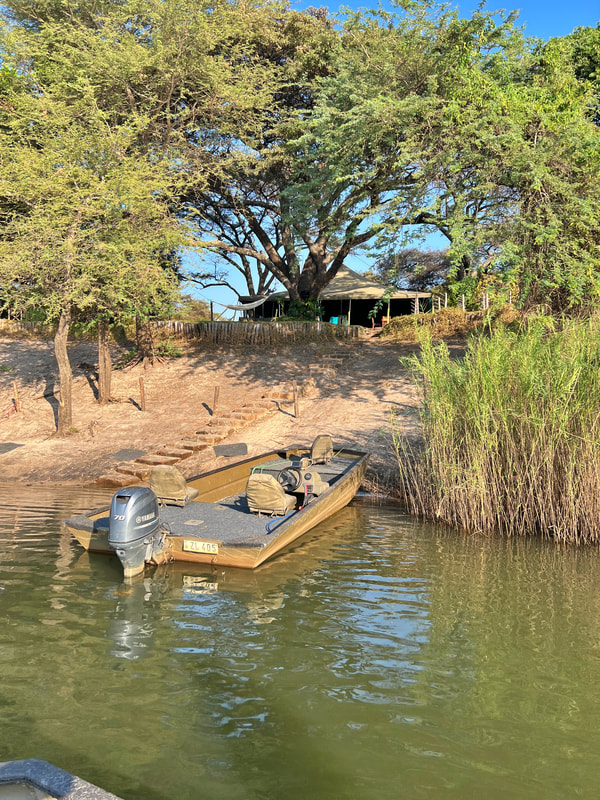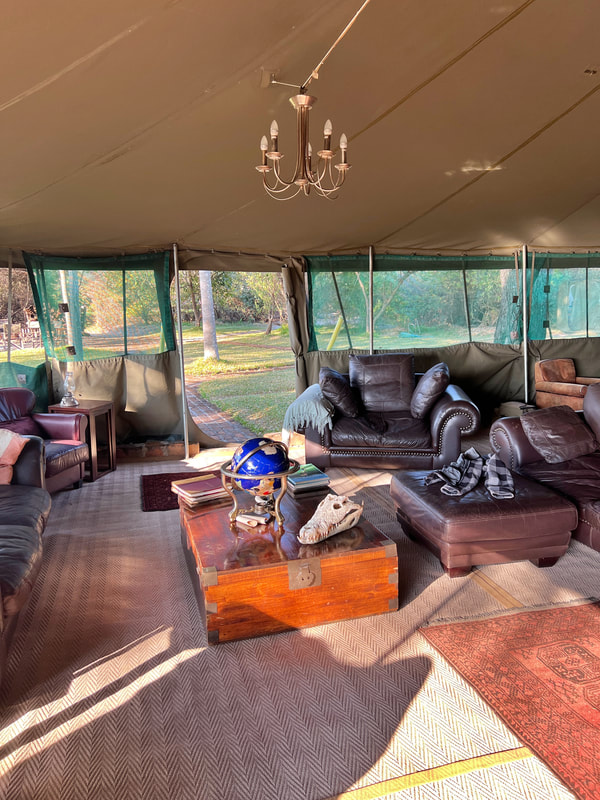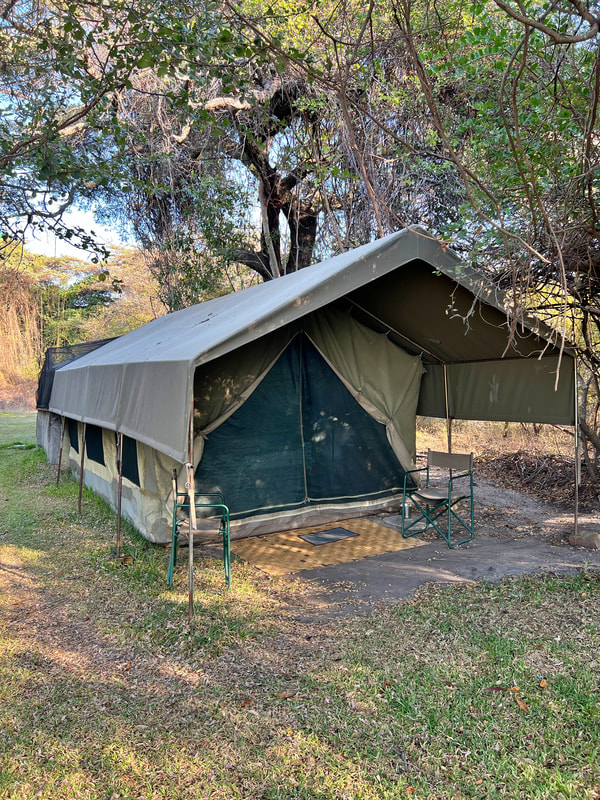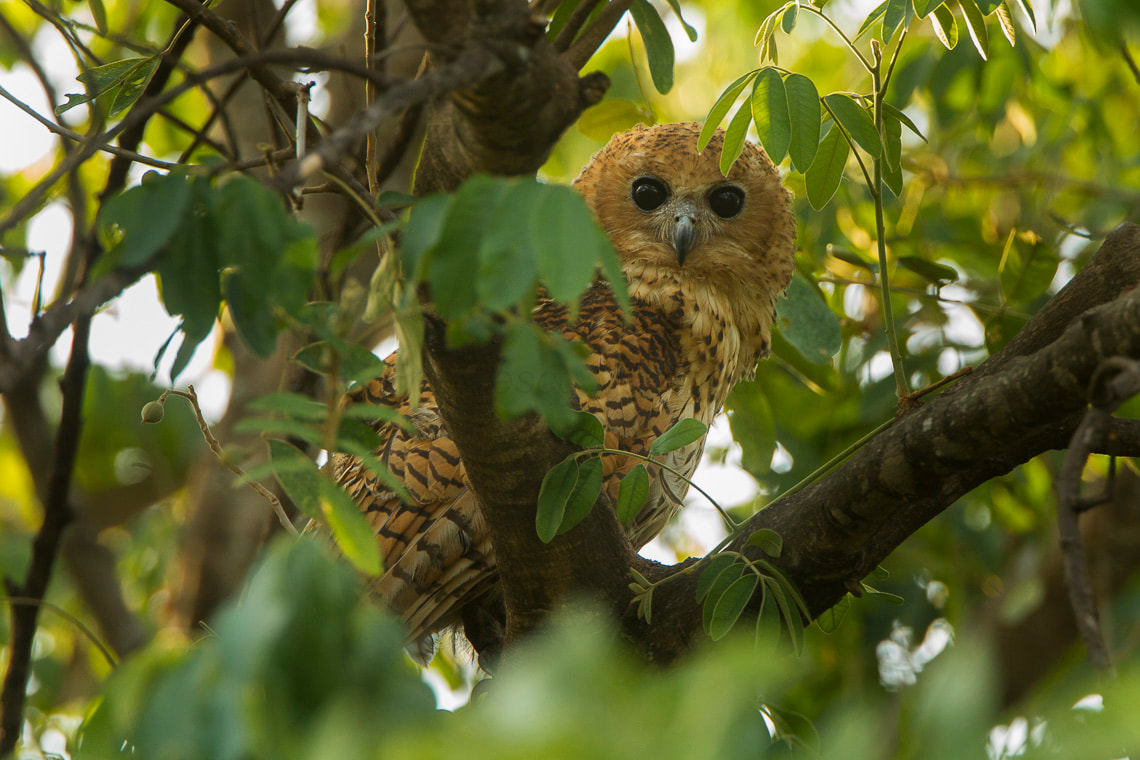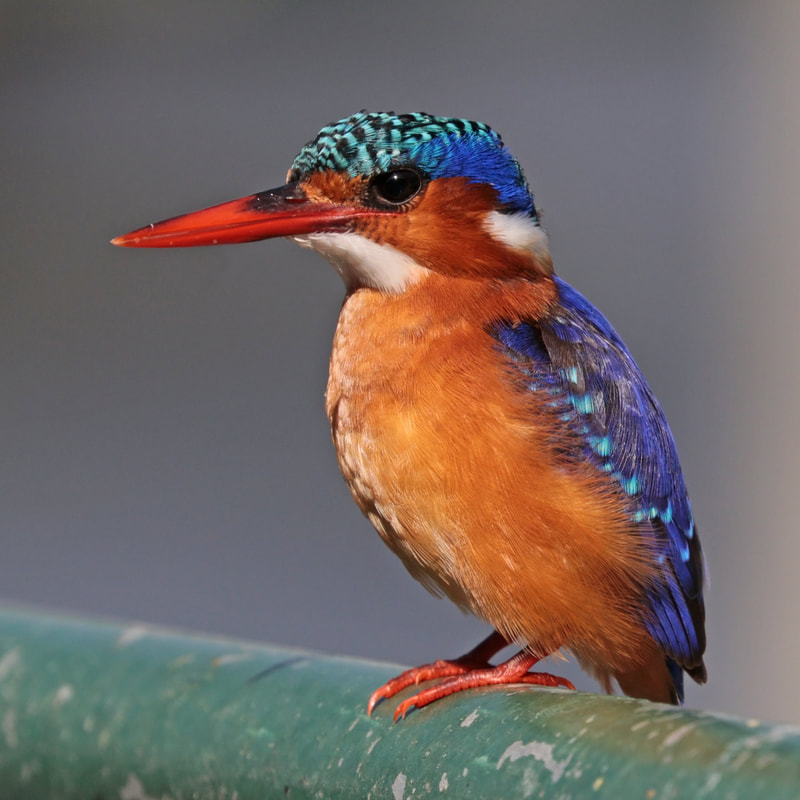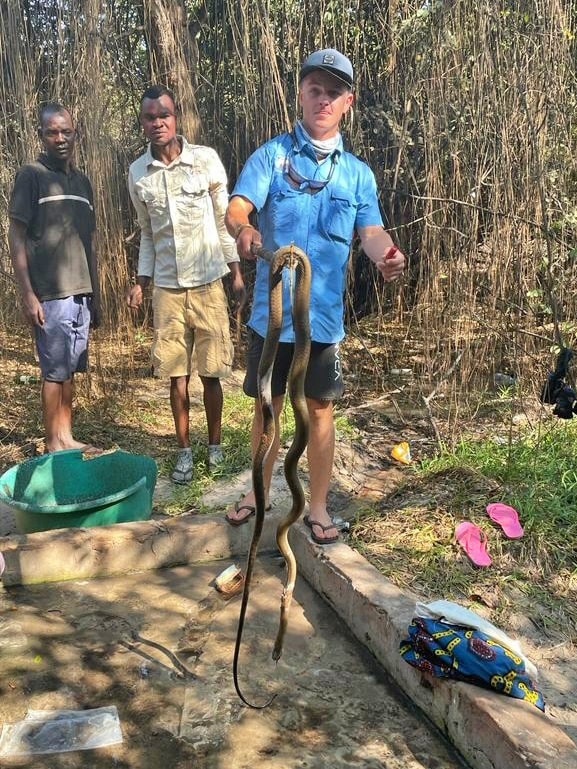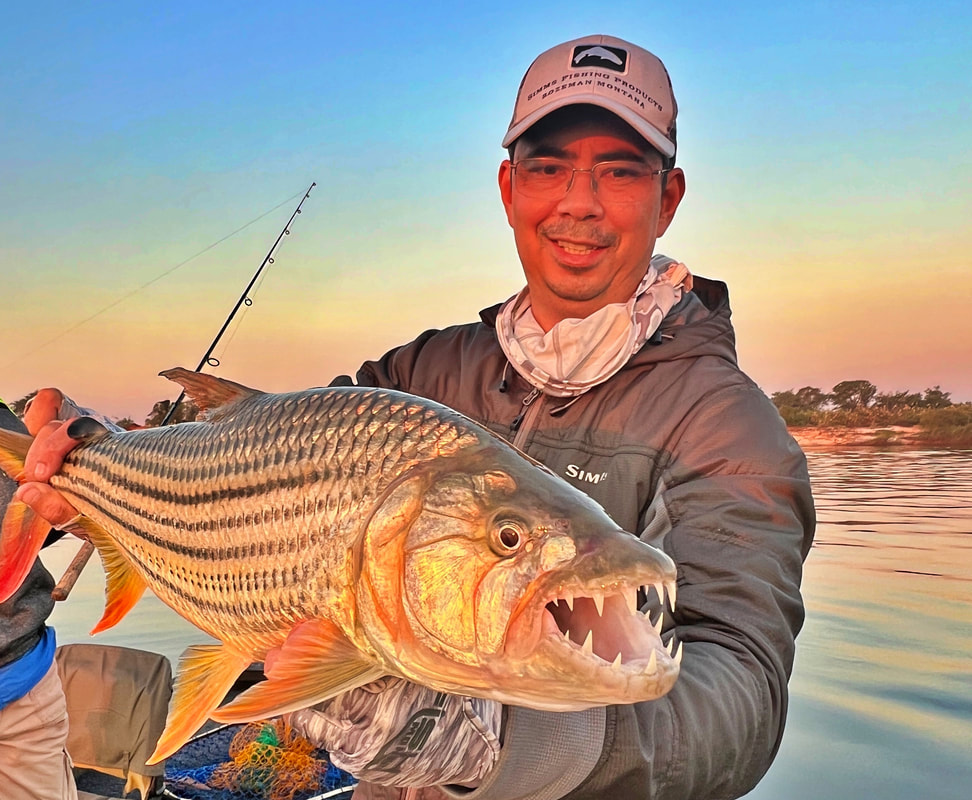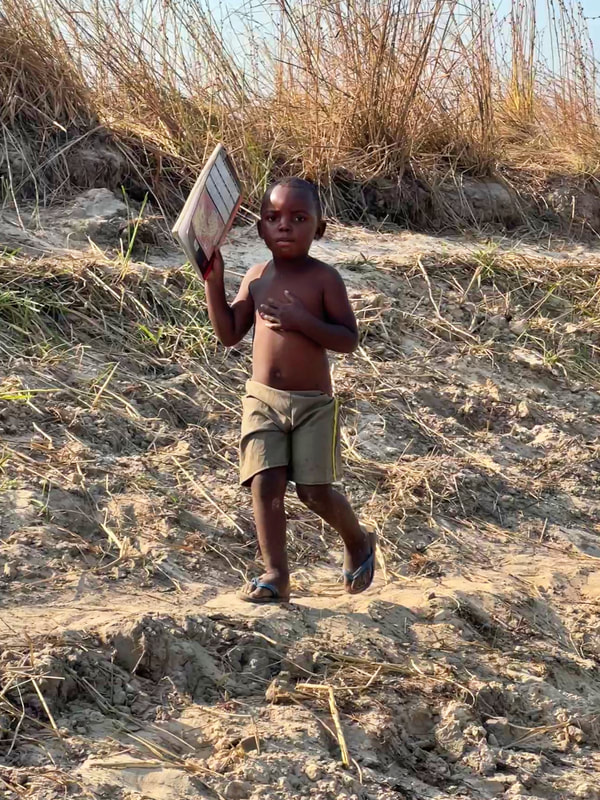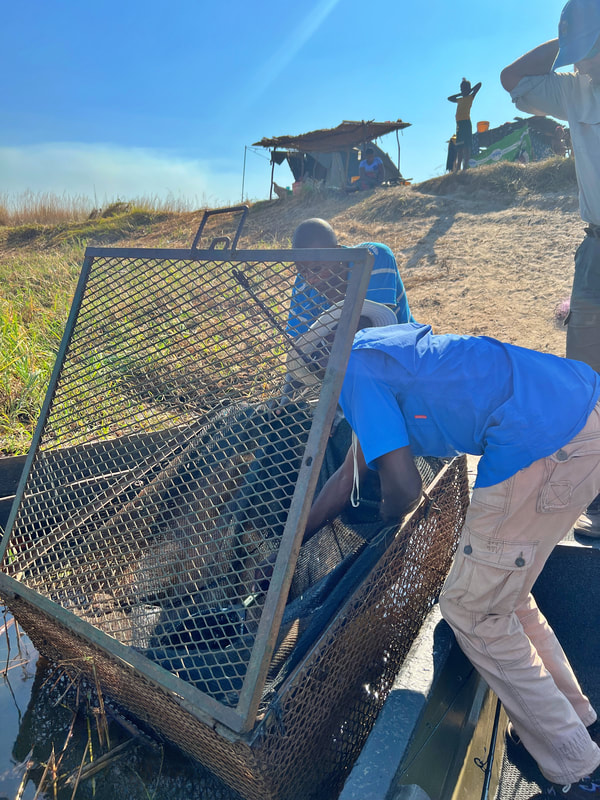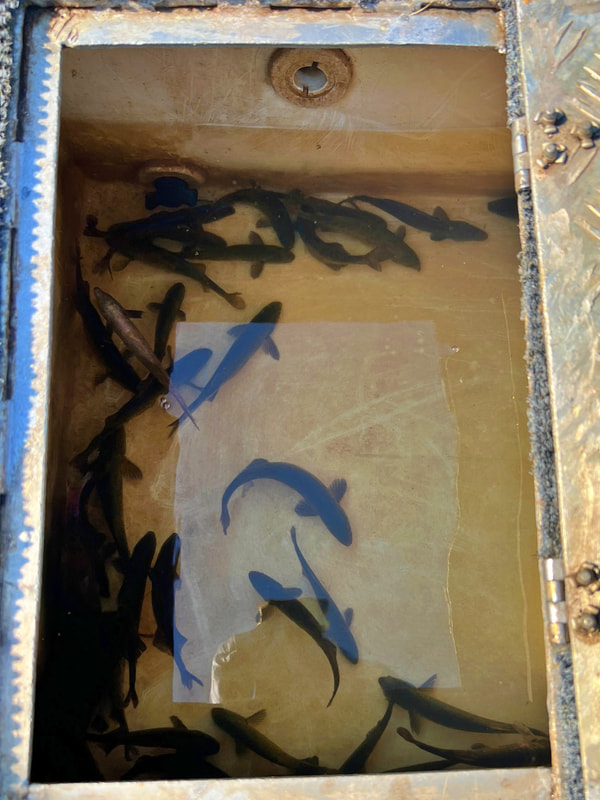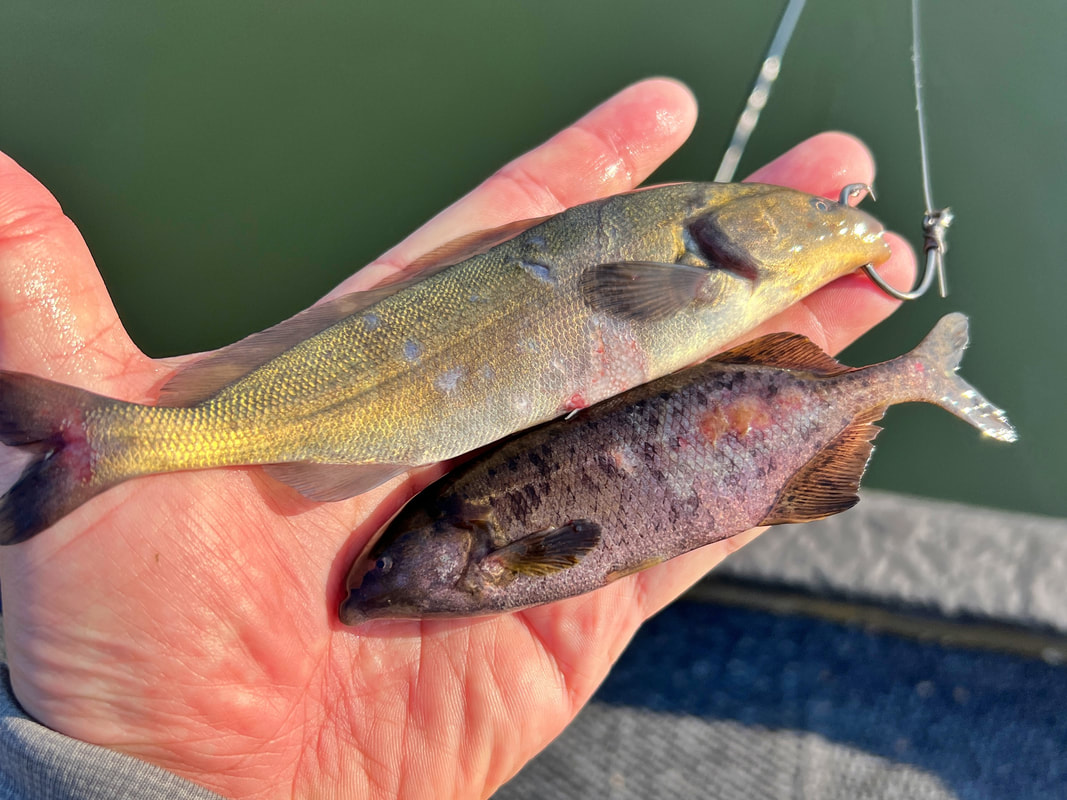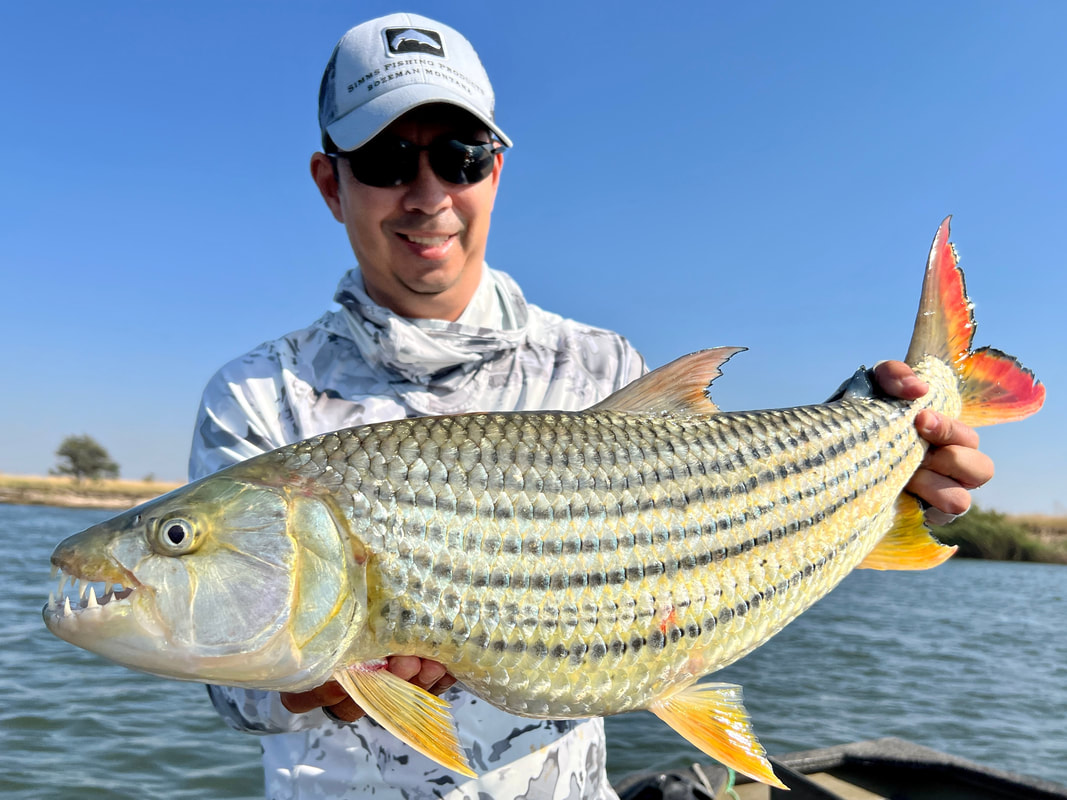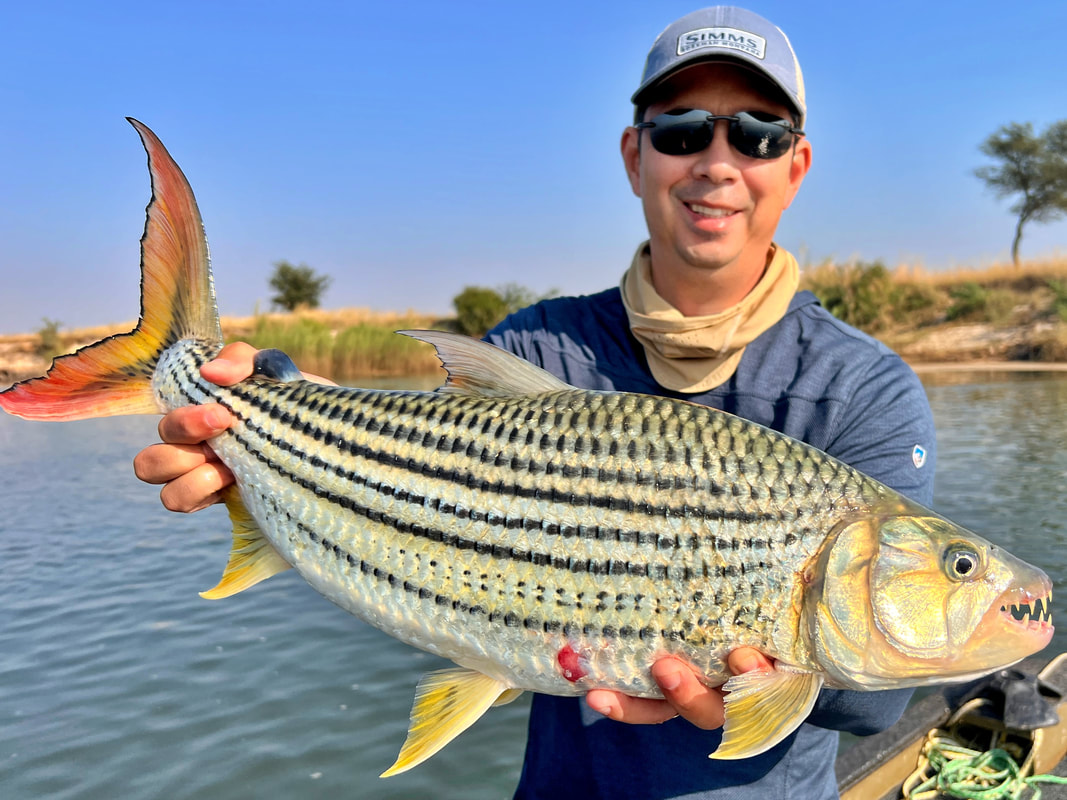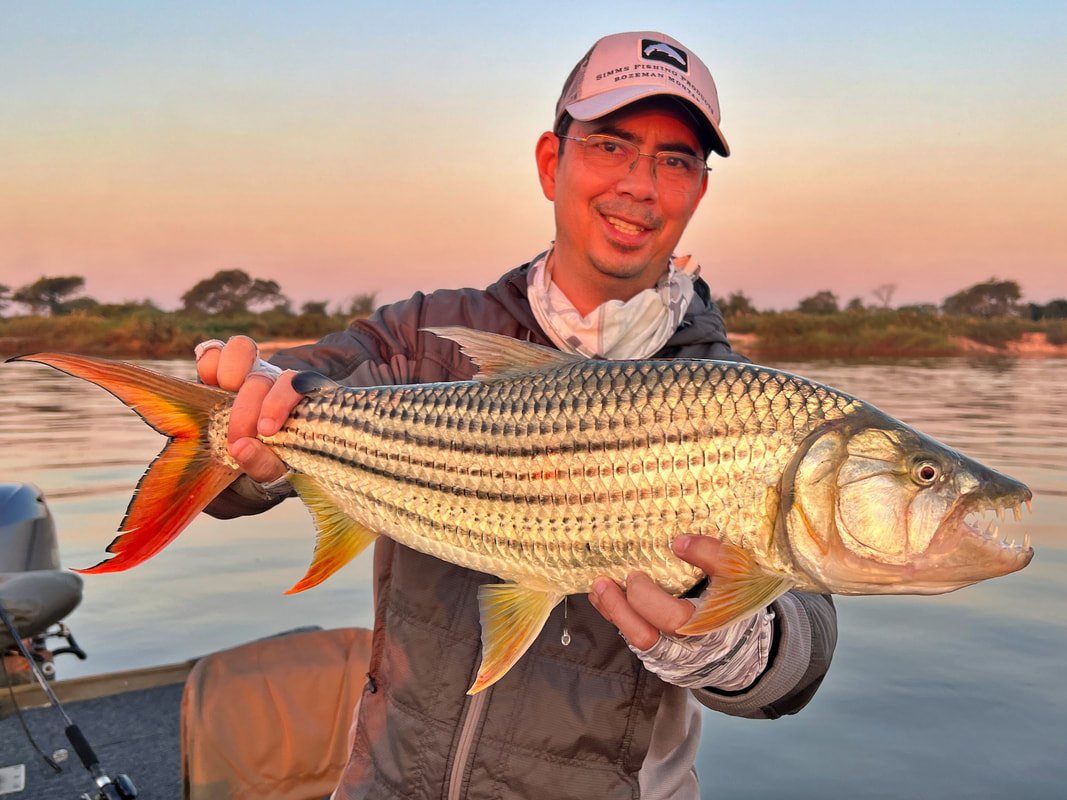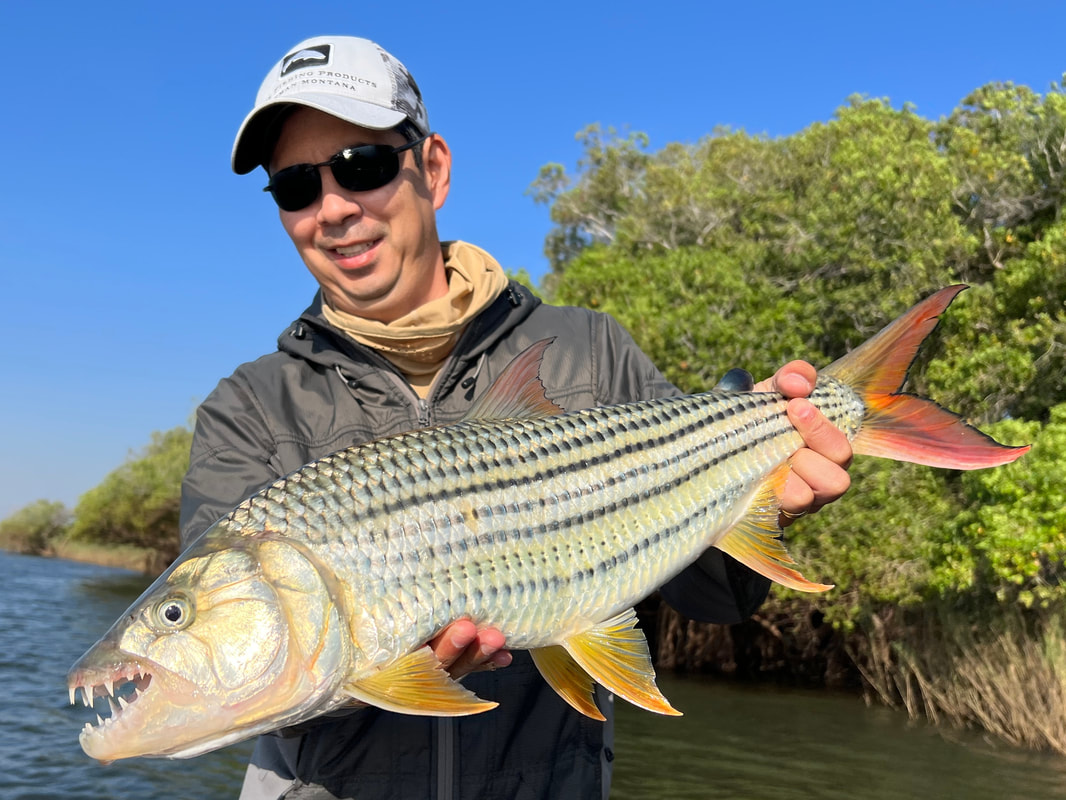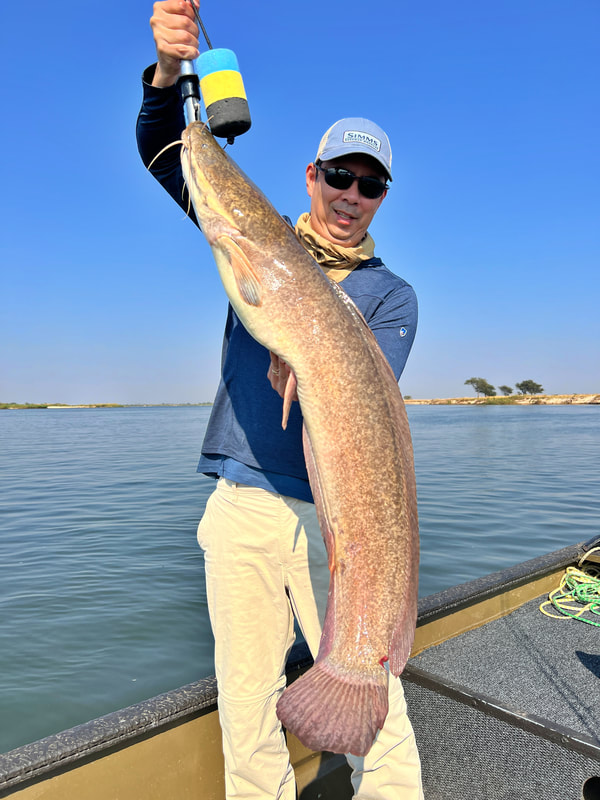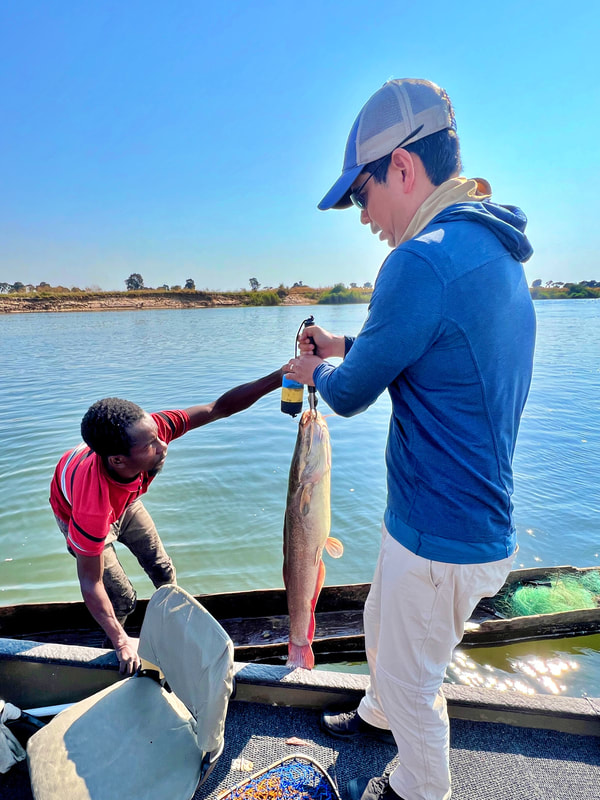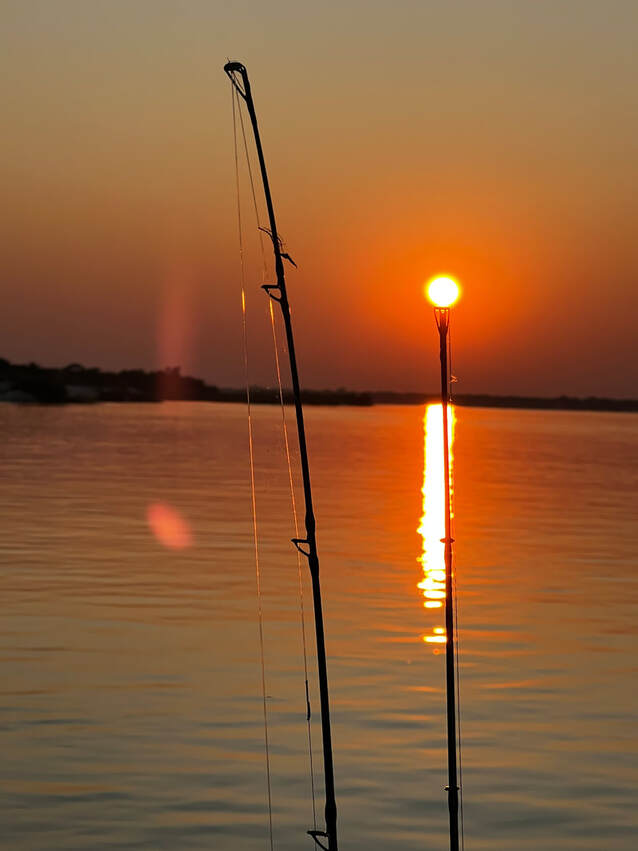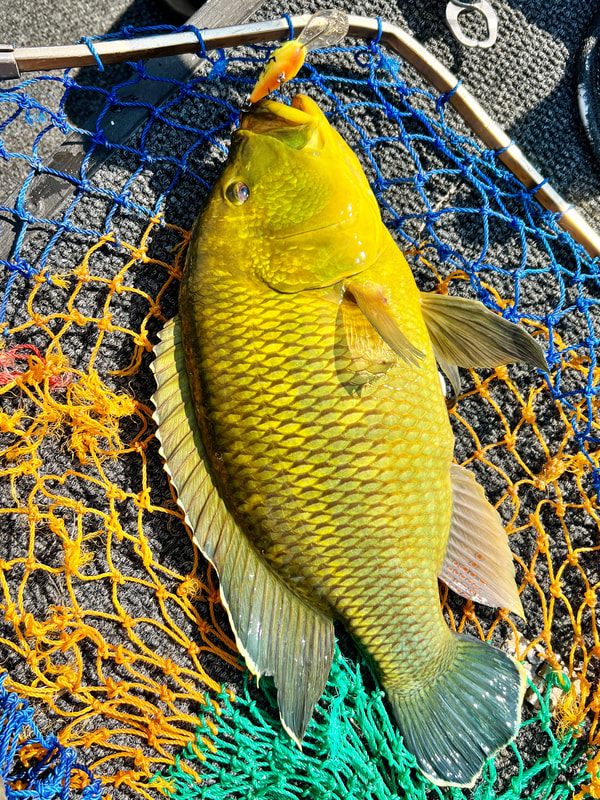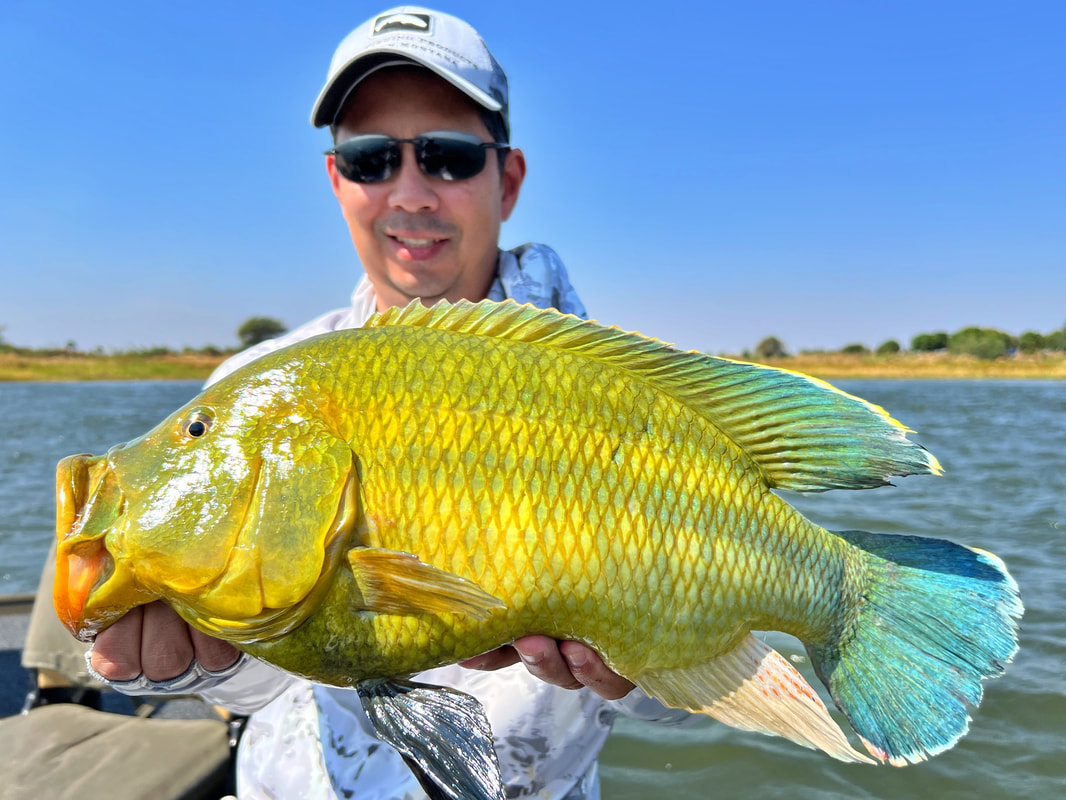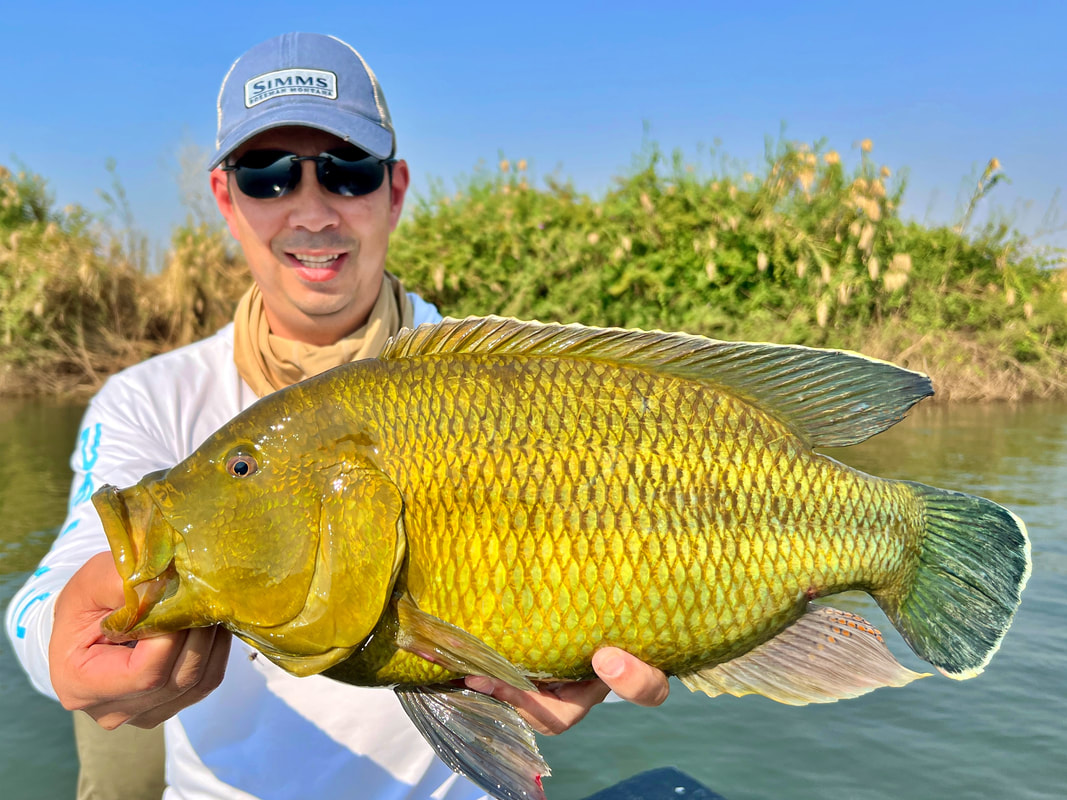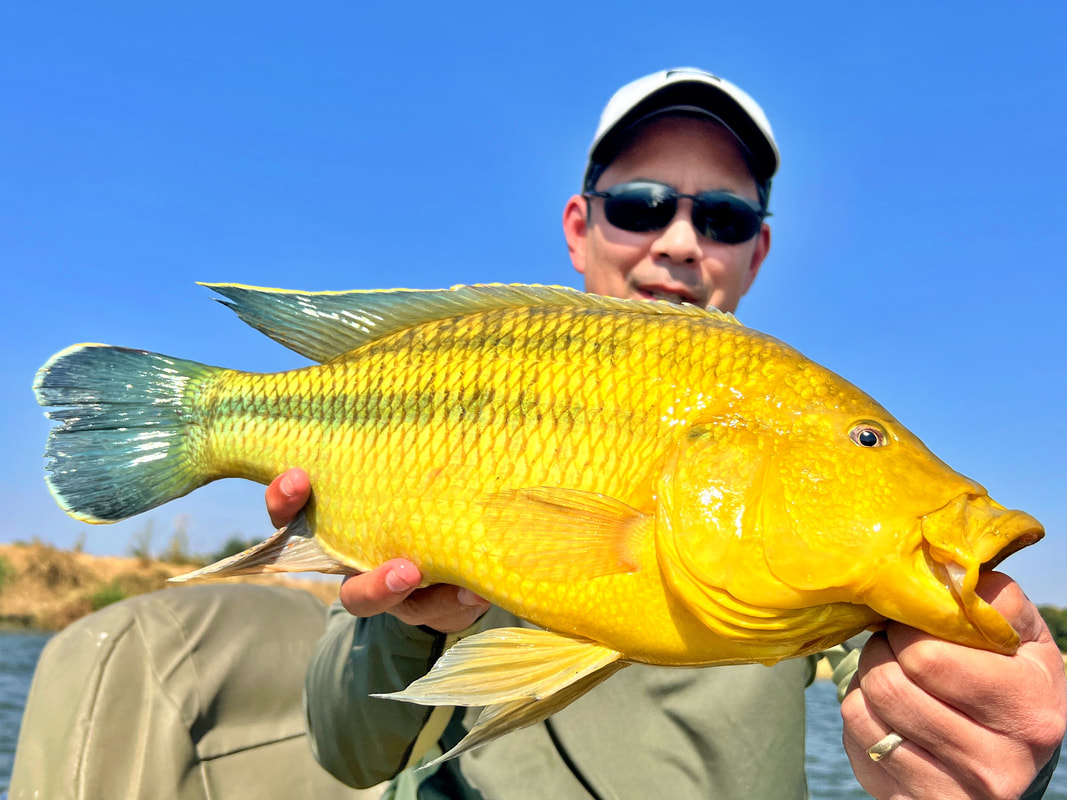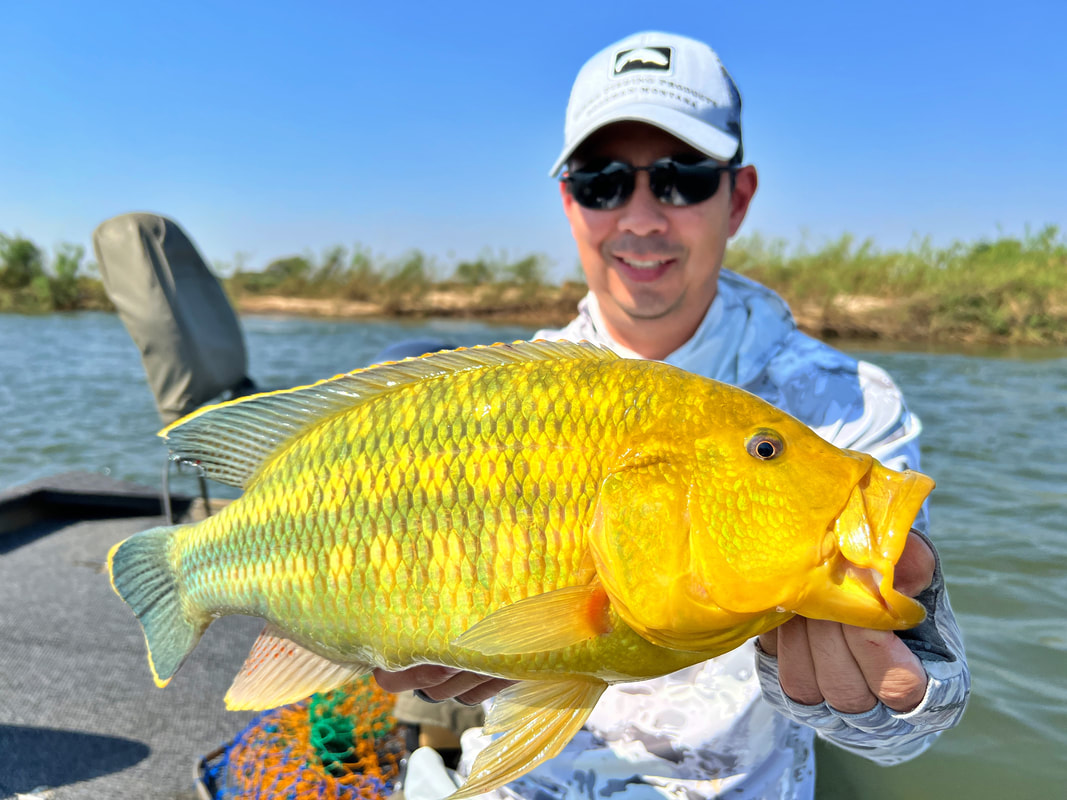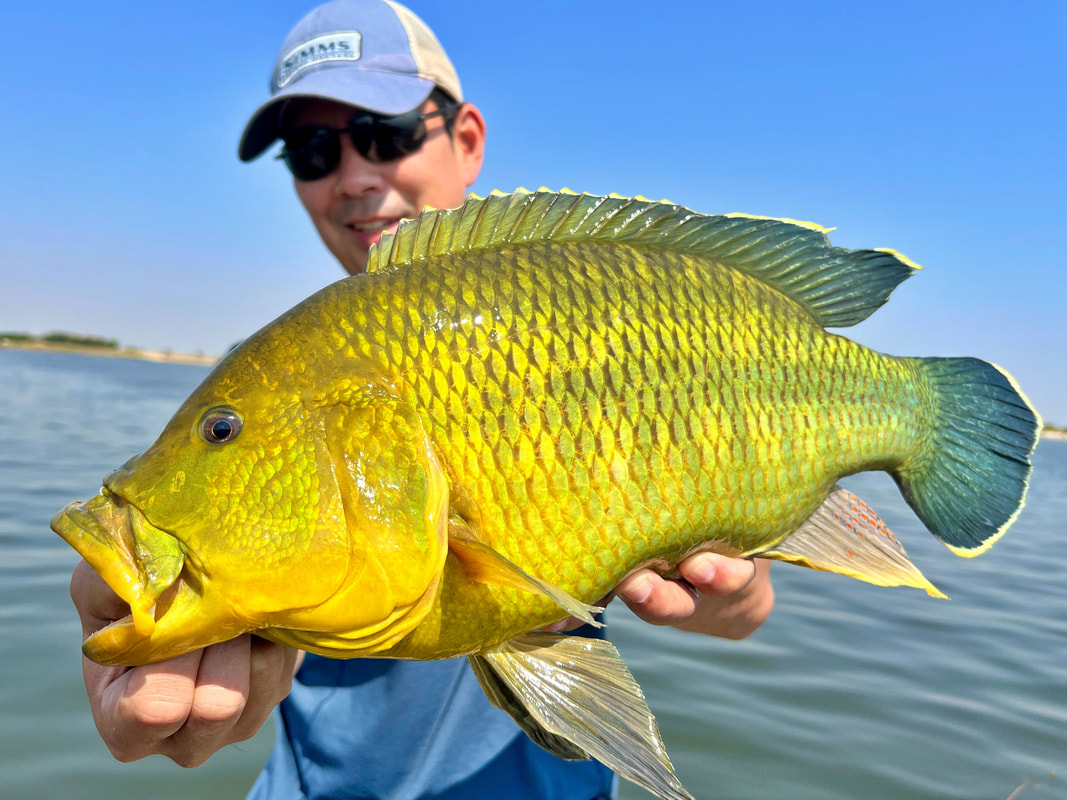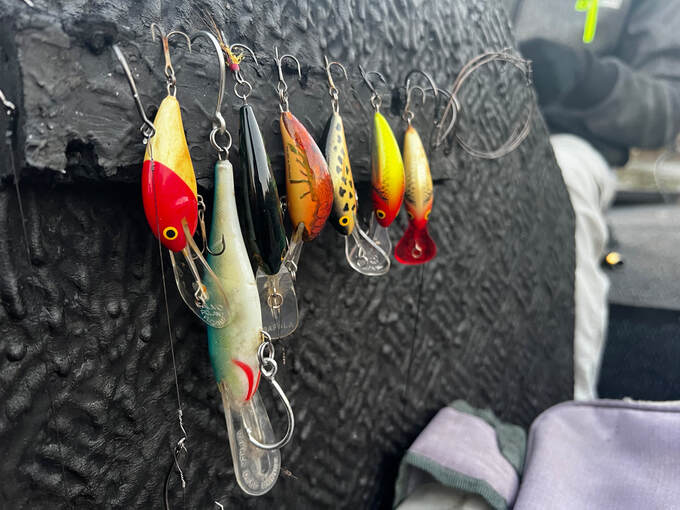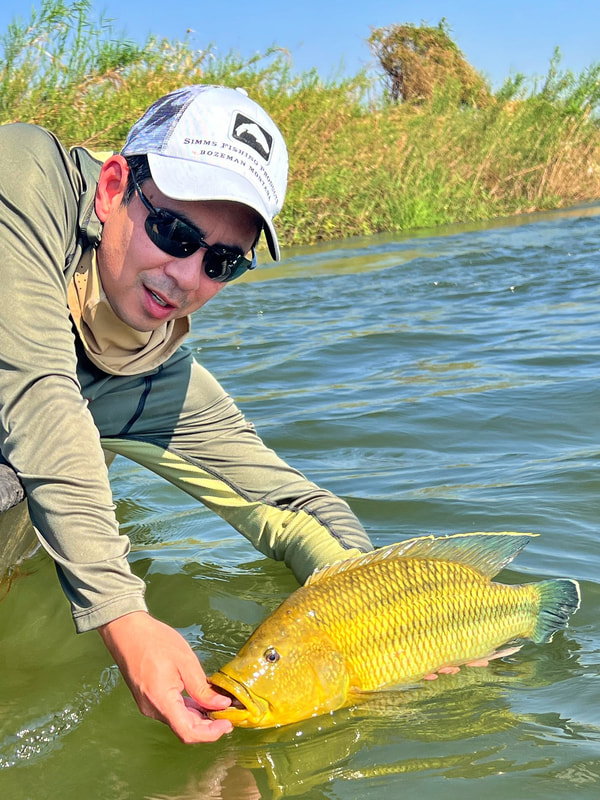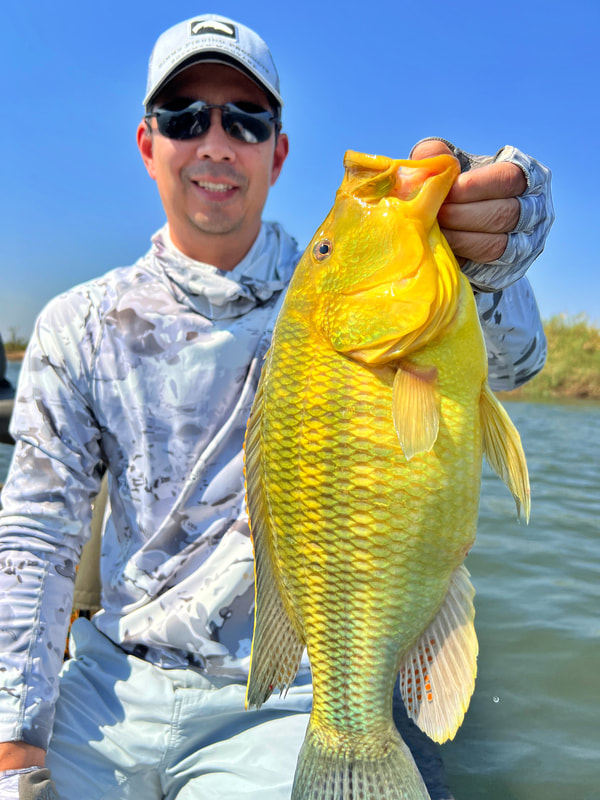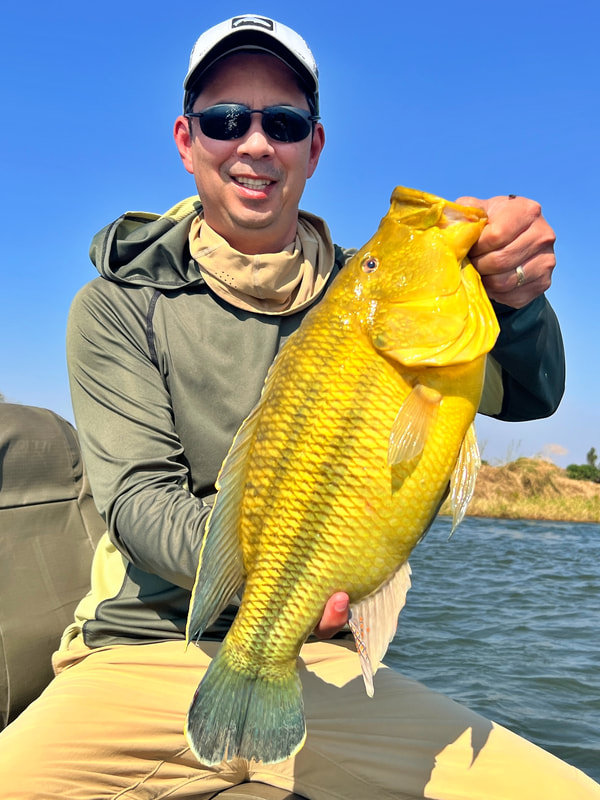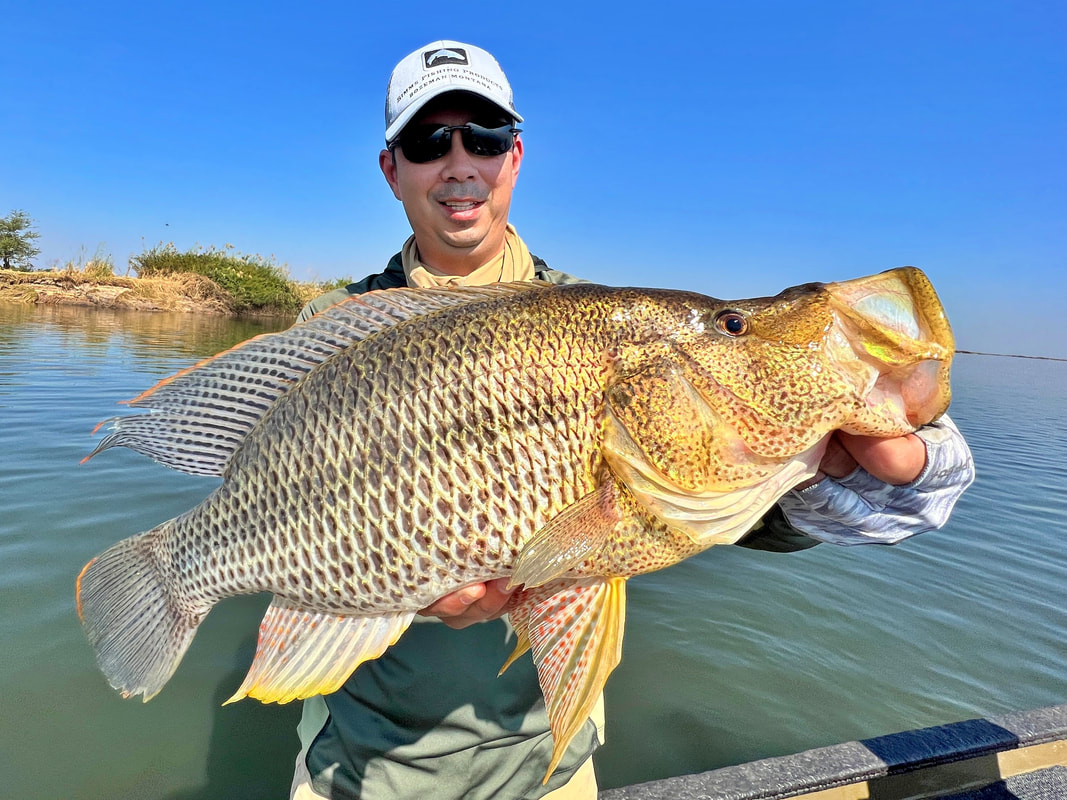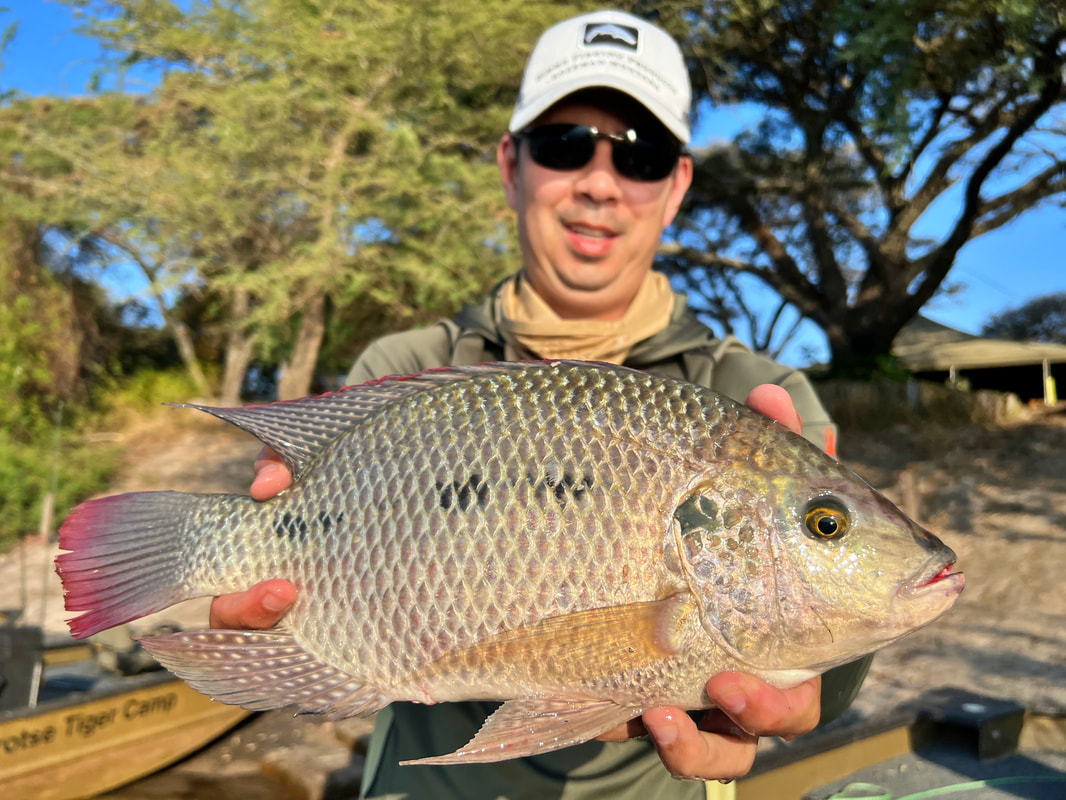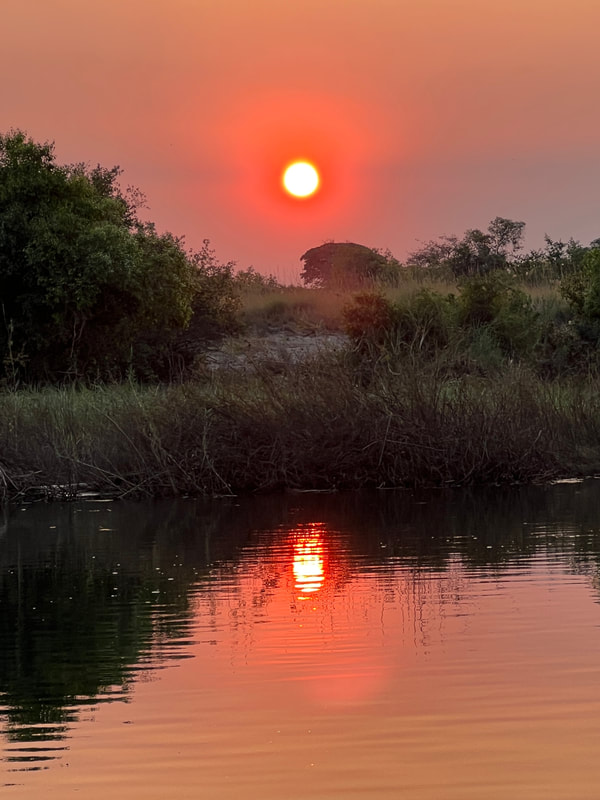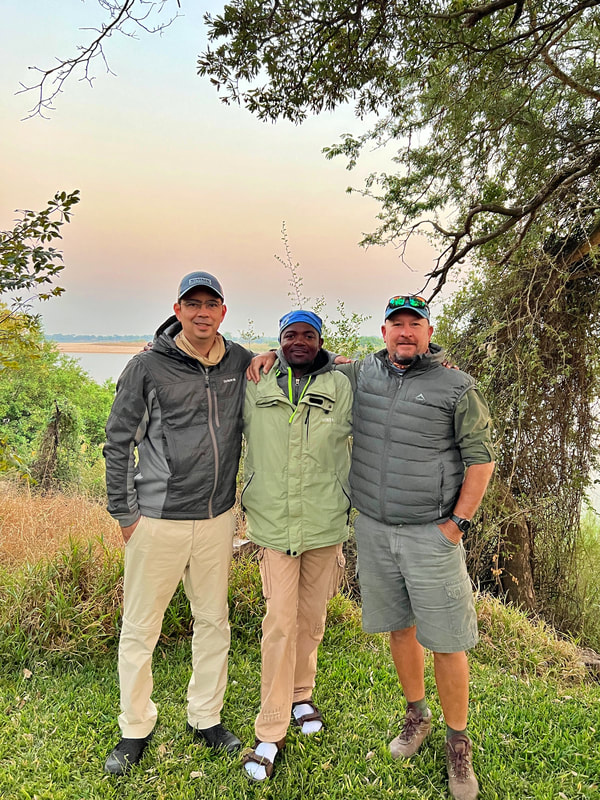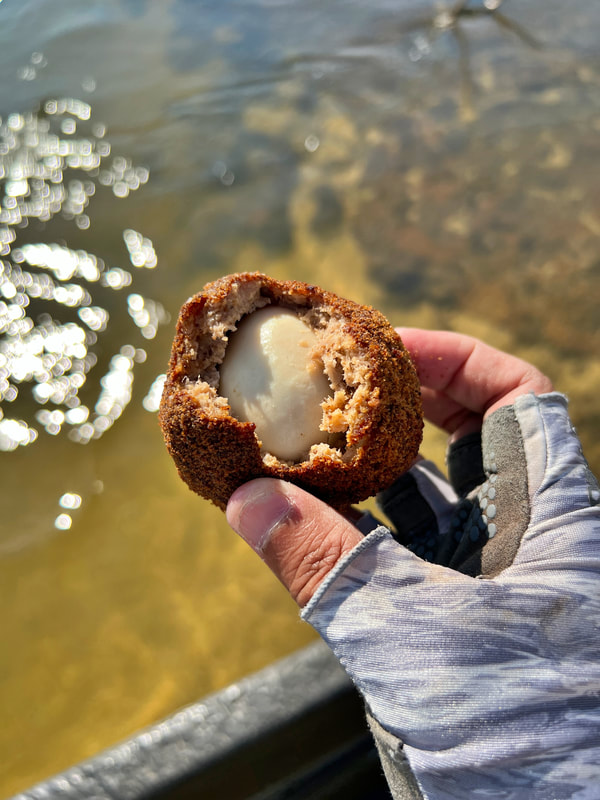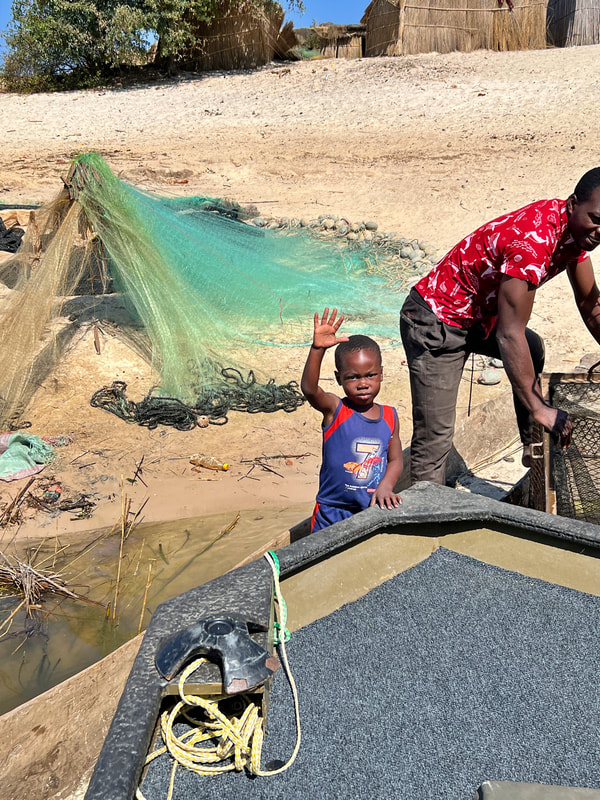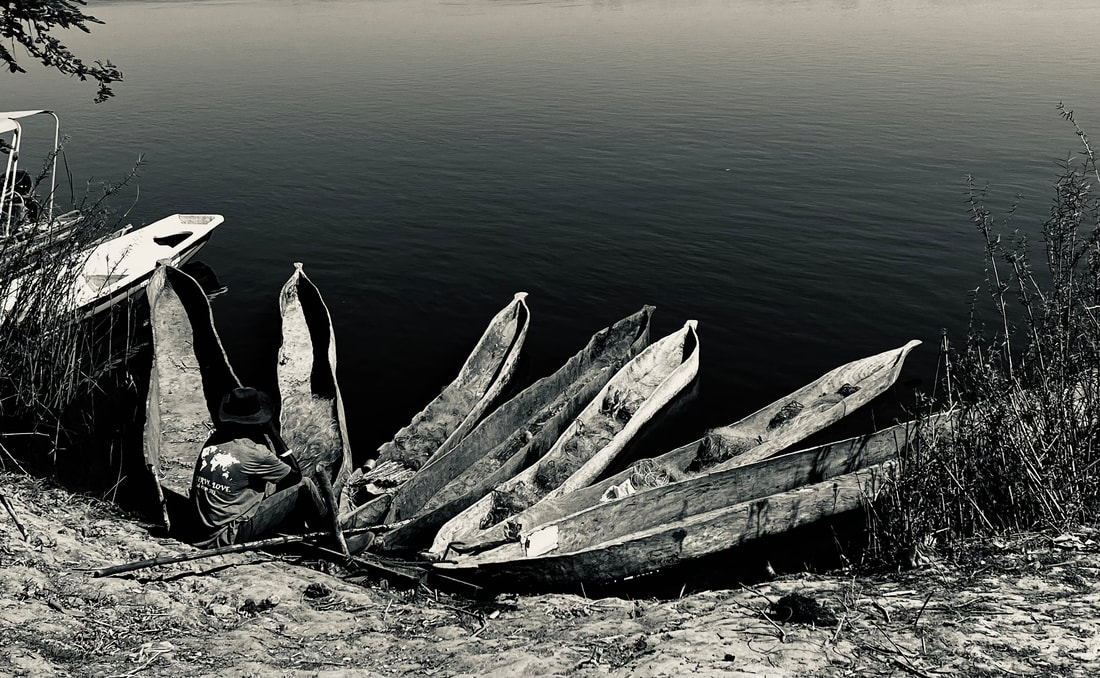Barotse Floodplain, Zambia
June/July 2023
Species: African Tigerfish, Nembwe, other Bream species, Sharptooth Catfish
The Area
The Barotse Floodplain in western Zambia is a remote and seldom-visited corner of Africa. It lies in the western end of the country in an area broadly referred to as Barotseland. You can drive to it, but it is a bone-jarring 13 hours from Lusaka on rough roads and is not recommended. I took a small charter plane with three other people.
June/July 2023
Species: African Tigerfish, Nembwe, other Bream species, Sharptooth Catfish
The Area
The Barotse Floodplain in western Zambia is a remote and seldom-visited corner of Africa. It lies in the western end of the country in an area broadly referred to as Barotseland. You can drive to it, but it is a bone-jarring 13 hours from Lusaka on rough roads and is not recommended. I took a small charter plane with three other people.
Barotseland is primarily inhabited by the Lozi people, who are the fourth biggest of the 73 tribes in Zambia. There is a king, but his power is limited by the Zambian government so it seems that functionally he is more like a governor of a province. There is a movement for independence in Barotseland, but I did not get the sense it was going to go anywhere fast. There are no large cities there, and people are mostly found in small villages scattered throughout the area. Zambia is a poor country, and this is one of the poorest parts of Zambia. Most of the people I encountered lived at a very basic subsistence level that few Americans can probably comprehend, relying on fishing to survive. They come to fish during the dry season and then move to other areas during the rainy season to farm.
Cattle are an important part of the local culture. When people get married there, it is still expected that the groom's family provide the bride's family with some cows. I was told that the average price is 7 cows for a desirable woman, with education being a big component of desirability. Men can marry as many women as they want, but few can come up with that many cows and then also provide for their families. Cows were the primary large animals we saw other than a few hippos near camp and the occasional croc. You would think a large river like this full of fish would be filled with crocs, but apparently the Tigerfish prey on the young crocs and keep the population down (!!!). I'm sure locals have killed some of the adult crocs as well.
The Zambezi River goes through the heart of this area, and is used as a primary means of transport since very few in the area can afford to own cars and the sparse roads are in terrible shape. People paddle dugout canoes called mokoros up and down the river all day, transporting people and goods. There are water taxis that transport larger groups with tiny outboard motors. Some of these were so overloaded that they were barely above the water line, and I'm sure are quite dangerous to ride unless you are a very strong swimmer (and probably even if you are).
Very few tourists come to this area. There is not much to do and little to see, since the hungry population has wiped out or driven away most of the larger wildlife. The main reason a foreigner might want to come here is the reason I came here - it is one of the few places on Earth where you can target truly trophy Tigerfish and Nembwe. You would think these would all have been caught and eaten as well, but the locals do not heavily target Tigerfish (they bite through the nets) and most of the fishing for Nembwe and other Bream is concentrated right on shore, so the larger fish are rarely caught if they survive to adulthood.
Much of the area is under water during the wet season, which lasts approximately from November to April. During this time, the baitfish all go into the newly flooded areas to feed and breed. When the water recedes, they funnel back into the main Zambezi River channel, and the predators feast on them. I got there after this had occurred and the water levels had largely stabilized. It was middle of winter here in late June, and mornings were in the high 40s/low 50s before warming up to the low 80s around mid day.
The Camp
Barotse Tiger Camp sits on a steep bank overlooking the Zambezi. There are two other camps in the area, but Barotse Tiger Camp is the oldest and I believe the best. The location is good for a couple of reasons - it is above the flood zone during the high water season and the bank is too steep for the hippos to want to climb up. There was a pod of hippos living in front of camp while we were there, probably because poachers would not want to shoot them right in front of camp and hippos are a difficult animal to kill quietly. They were quite loud at night, as all hippos are, and their bellows and grunts were pleasant background noises to fall asleep to.
Barotse Tiger Camp sits on a steep bank overlooking the Zambezi. There are two other camps in the area, but Barotse Tiger Camp is the oldest and I believe the best. The location is good for a couple of reasons - it is above the flood zone during the high water season and the bank is too steep for the hippos to want to climb up. There was a pod of hippos living in front of camp while we were there, probably because poachers would not want to shoot them right in front of camp and hippos are a difficult animal to kill quietly. They were quite loud at night, as all hippos are, and their bellows and grunts were pleasant background noises to fall asleep to.
The camp was safari style, with spacious tents with en-suite bathrooms and mosquito nets. There were very few mosquitoes since it was winter; just a few around dusk. I'm usually a mosquito magnet and I only counted 3 bites all week. The bathrooms had hot and cold running water, which was a huge plus. The camp only holds 12 anglers at a time, and there were never more than 4 at a time when I was there.
The main common area had surprisingly strong internet for such a remote location.
There was a Pels Fishing Owl that lived in camp, but sadly I never saw it despite its large size; only heard it. To be fair, I spent no time looking for it. There were a number of other birds around like various Eagles, Kingfishers, Herons, and African Skimmers. I saw several Malachite Kingfishers which are a spectacular bird. These are not my images; they are just free to use images I found to show what the birds look like.
There was a Pels Fishing Owl that lived in camp, but sadly I never saw it despite its large size; only heard it. To be fair, I spent no time looking for it. There were a number of other birds around like various Eagles, Kingfishers, Herons, and African Skimmers. I saw several Malachite Kingfishers which are a spectacular bird. These are not my images; they are just free to use images I found to show what the birds look like.
Fortunately snakes were sparse due to it being winter, but a Black Mamba did wander into camp one day while I was out fishing and immediately wished it hadn't because it was promptly shot by the staff. I was surprised to learn that Black Mambas aren't black; the name comes from the insides of their mouths which are black. The snake's head was then given to a local witch doctor to do whatever it is they do with them. Black Mambas are not very aggressive, but are nervous and twitchy and if cornered will strike multiple times with potentially deadly consequences. Definitely one of the last snakes you want to be bitten by. If you are bitten, you had better hope you are in a hospital lobby with antivenom when it happens.
The Fishing
The main target species in the area is the Tigerfish. They are a fearsome predator with some almost alien-looking teeth. They chomp on anything they can eat in the river, including each other. Unfortunately fishing for them had slowed the week before our arrival, and was slow our entire trip. Fortunately, at Barotse Tiger Camp they fish 12-hour days (6:45am to 6:45pm) and if you put your time in you would get some shots at some potentially huge fish. Very, very few places on Earth give you a legitimate shot at a 20lb Tigerfish, and this is definitely one of them.
The main target species in the area is the Tigerfish. They are a fearsome predator with some almost alien-looking teeth. They chomp on anything they can eat in the river, including each other. Unfortunately fishing for them had slowed the week before our arrival, and was slow our entire trip. Fortunately, at Barotse Tiger Camp they fish 12-hour days (6:45am to 6:45pm) and if you put your time in you would get some shots at some potentially huge fish. Very, very few places on Earth give you a legitimate shot at a 20lb Tigerfish, and this is definitely one of them.
I lure fish 90% of the time, but the cold clear water and slow bite pretty much ruled that out. Fortunately, the camp has a surprisingly extensive system for getting live bait. The camp has three full time employees spread out down the river whose only job is to get bait. They buy them from local fishermen and store them in metal cages that they sit by and guard day and night with their families. Each of them had a detailed notebook where they would record all bait transactions. There was a whole little economy around getting bait for this one camp.
There were certainly Tigerfish around, and some very big ones, but I often went a long time between bites. Every day I landed at least one, but never landed more than three. To be successful, you really had to convert as many of the bites into fish as possible, by staying in close contact with your bait at all times and waiting the appropriate amount of time before setting the hook. If you set too early, the fish would usually not have the hook in its mouth and you would just pull the bait away from it or off the hook. If you waited too long, the fish would often feel the hook and spit it out. We were fishing with circle hooks, so every single fish was hooked cleanly in its bony mouth and could be released healthy.
The morning bite was the best, and I did not land a single Tigerfish in the afternoon. One morning I had an enormous fish on. When it jumped, as almost all Tigerfish do, it was so heavy that it couldn’t get its whole body out of the water. The part that did emerge was enormous. I knew that was the fish that I came for, and I likely would not get another shot at one that size during the trip, so I tried to get it near the boat as quickly as I could to minimize the chance it would wrap the line on one of the many underwater stumps. Alas, I got it 90% of the way in and that is exactly what happened. I was really gutted, because it was a tremendous fish that I’m sure easily cleared 20lbs. Every few years I lose a fish that sticks with me forever, and I’m sure that will be one of them. It still pains me to write about it.
As disappointing as that was, I kept fishing and managed to get some really nice fish, capped by this big girl on the second to last day.
As disappointing as that was, I kept fishing and managed to get some really nice fish, capped by this big girl on the second to last day.
Zambezi Tigerfish have really nice coloration, with variations of red, orange, and yellow on their tails and fins. Here are some other beautiful fish I landed throughout the week. In all I landed 14 Tigerfish in 7 days of fishing. Here are a few more of them.
The other folks at the lodge were struggling as well. There were 5 other anglers at the lodge while I was there, each fishing 3.5 days. Two of them did not land a single Tigerfish during their time there, two guys landed 4, and one landed 2. However, one of the guys who landed 4, a college student fishing for Tigerfish for the first time, landed only giants. His first fish was 21.5lbs, followed by a 14lber, a 22lber, and a 19lber. Wow. He had a fantastic trip in terms of trophies landed, and went home very happy. There are not many places you can catch Tigerfish that size, and they are rare even in those places. He was a very keen angler who barely slept the first few nights because of how excited he was to fish, so everyone was happy for him. Another guy got an 18lber right in front of camp first thing in the morning. That was a great fish as well.
Throughout the week I would get bites from Sharptooth Catfish; I caught 1-2 per day. Some were quite large. I gave them to the locals to eat if anyone was around when I caught them.
Throughout the week I would get bites from Sharptooth Catfish; I caught 1-2 per day. Some were quite large. I gave them to the locals to eat if anyone was around when I caught them.
I had not only come for Tigerfish; I also really wanted to catch some of the Bream species they have there, particularly the beautiful Nembwe. Fortunately, those were biting a bit better than the Tigerfish if you could get a lure in front of them. It was a little difficult to fish for them, as they are found closer to shore and hence closer to all of the nets people put out. I hooked a lot of nets in the course of fishing for them. I hooked more nets than fish, and spent a lot of time untangling my lures from nets. Most of the nets I hooked were abandoned ones that were stuck on the bottom. Unfortunately they still trap fish and cause a lot of needless fish death and waste. However, when I was able to get my small crankbaits around the nets and reeds, the Nembwe would strike them with a vengeance. I landed 1-2 Nembwe per day, along with a beautiful Thin Face Bream and a Three Spot Bream.
Nembwe are a spectacular fish and are certainly in the running for “most beautiful freshwater fish”. Males are a little larger and are more green, while females are more yellow. Each one had bright and unique coloration that pictures do not do justice to. They are a strong fish, and make a run for underwater stumps when hooked. I had one that managed to get in the stumps, but after 5 minutes I was miraculously able to pull it out. I ended up landing 10 Nembwe for the trip, and they were all beauties. No one else landed a Nembwe while I was there; they all spent most of their time fishing for Tigers and understandably got frustrated by the nets while fishing for Nembwe. However, I persevered and reaped some great rewards. All the Nembwe and Bream were released to hopefully reproduce.
Side by side comparison of the female and the male. The males have more green, but there is wide variation in both.
A couple female beauties
In addition to the exquisite Nembwe, I caught two other species of cichlid that are collectively referred to as “Bream” in southern Africa. These were the Thin Faced Bream (of which my guide said they only catch 2-3 per season) and the 3 Spot Bream.
Even though I had to grind for every fish, I was very happy with the results of the trip. I'll take quality over quantity any day. A South African who had flown over in his own plane was kind enough to give me a lift back to the capital city of Lusaka, and then I headed home.
Zambia is a wonderful country and I hope I can make it back some day. Here are a couple miscellaneous photos.
Zambia is a wonderful country and I hope I can make it back some day. Here are a couple miscellaneous photos.
